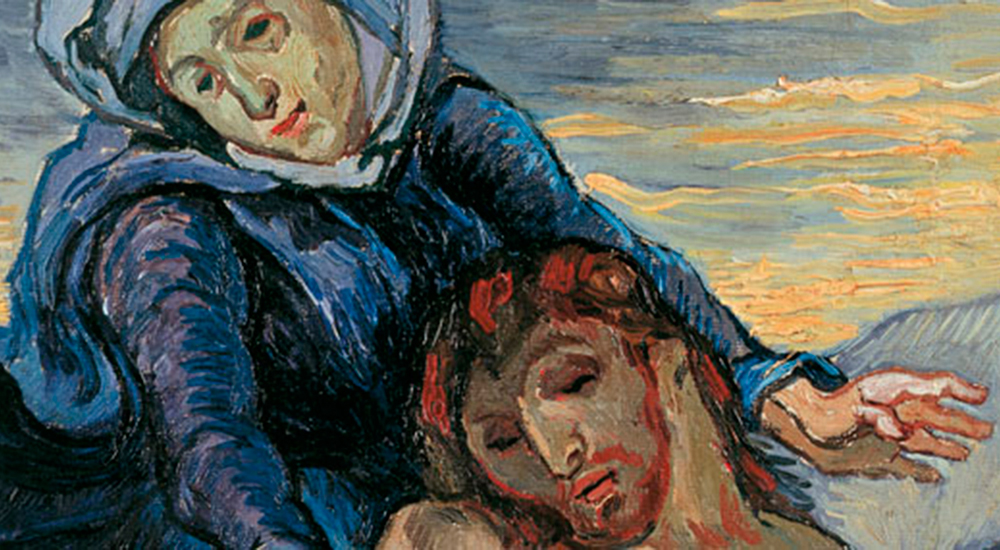Bellezza divina tra Van Gogh, Chagall e Fontana
Palazzo Strozzi from 24 September 2015 to 24 January 2016
The relationship between art and the sacred between the mid-19th and mid-20th centuries is the subject of a profound reflection on display until 24 January 2016 at Palazzo Strozzi in Florence with the exhibition Bellezza divina tra Van Gogh, Chagall e Fontana [The Divine Beauty of Van Gogh, Chagall and Fontana].
Divine beauty is an extraordinary opportunity to compare very famous works from an unusual point of view: displayed alongside other less famous works by artists who are less known today and whose work contributed not only to sacred art but to the rich and complex modern art scene.
There are over one hundred works on display by important Italian artists such as Domenico Morelli, Gaetano Previati, Felice Casorati, Renato Guttuso, Lucio Fontana, Emilio Vedova, and international artists such as Vincent van Gogh, Jean-François Millet, Edvard Munch, Pablo Picasso, Max Ernst, Georges Rouault, and Henri Matisse. The protagonists of the exhibition are true masterpieces: L’Angelus by Jean-François Millet, an outstanding loan from the Musée d’Orsay in Paris, which exudes an atavistic religiosity, a universal and transverse sense of the sacred; the Pietà by Vincent Van Gogh from the Vatican Museums, because – despite the religious and mystical vocation – the artist rarely represented sacred subjects, and was inspired by the works of other authors in this case; the Crucifixion by Renato Guttuso from the collection of the Galleria Nazionale d’Arte Moderna in Rome, an emblematic work with intense political overtones that, like Guernica, expresses a cry of pain; and the White Crucifixion by Marc Chagall, from the Art Institute of Chicago, Pope Francis’ favourite piece of art.
The exhibition shows how each artist felt the need to confront, and sometimes with a conflicted approach, the idea of transcendence. In the same way, the religious sphere has always felt the need to view art as a higher form of expressing itself, in this case too not particularly uniformly, through the spaces of liturgical sacredness, of devotion or of simple spirituality. The exhibition, divided into seven sections, has a system of walkways, as in a cloister where they are not closed in. As with all the exhibitions at Palazzo Strozzi, it offers an opportunity to discover places and sacred works related to the theme of the exhibition in Florence and in all of Tuscany. An exhibition beyond the exhibition to be explored.
Do not miss then, starting from March 18, 2016, again at Palazzo Strozzi, From Duchamp to Pollock. The Guggenheim collections in Europe and the USA.









